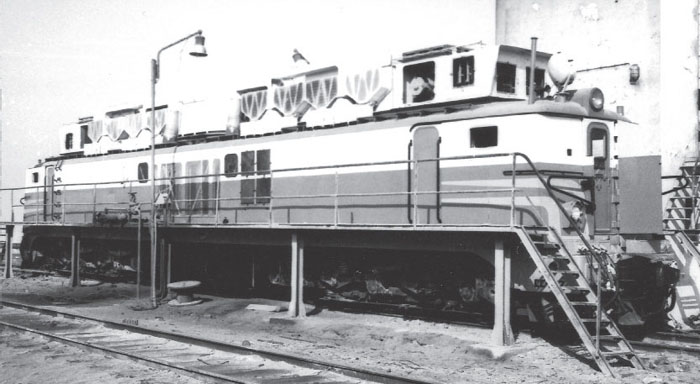
Iron ore represents some 50 per cent of Mauritania’s exports, and the iron mines of Zouérate, run by the Company MIFERMA (Iron Mines of Mauritania Ltd) are connected by an extremely long railway line to the Atlantic port of Nouadhibou. In the 1970s the operator, Mauritanian Railways, was owned by MIFERMA.
Following Mauritania’s occupation of the southern part of former Spanish Western Sahara in 1976, this crucial link came under regular attack by the POLISARIO Front, who were fighting to establish an independent Sahrawi Democratic Arab Republic (SDAR) in the occupied territories. Exchanging their camels for armed Land Rovers, the POLISARIO fighters launched lightning raids against the railway, causing significant damage to rolling stock and installations.
In 1978 the Mauritanians decided to armour the driving cabs of the locomotives and, at irregular intervals in the 2,500m (over one and a half miles) long iron ore trains they inserted improvised escort wagons. These were very summarily protected, by welding lengths of rail around the mineral wagon roofs to form a precarious shelter for the lookouts and gunners. The armament consisted of ex-Soviet 23mm cannon behind rudimentary shields.
In 1979 an armoured command wagon was constructed, and coupled near the end of the train. It was in direct radio commication with the locomotive. The ex-freight container which was used as the body was not fixed rigidly to the wagon chassis, in order to try to minimise the shocks felt when the extremely long convoy accelerated or slowed down. With 200 to 210 mineral wagons each weighing 83 tonnes, even a small gap of a centimetre between wagons, plus the spring effect of the couplings, would mean a to-or-fro movement at the rear of the train of 2–3m! This could produce a shock effect powerful enough to make an occupant of the command wagon lose his footing, if he were not prepared. The attacks ended when on 5 August 1979 Mauritania’s new government signed a peace treaty with the POLISARIO Front, recognised the right to independence of the SDAR, and withdrew its own forces.

MIFERMA Class CC 01-21 diesel locomotive, based on the SNCF CC 65000 Class (Alsthom) with two diesel engines as per the French locos but of higher power output.
(Photo: Private Collection)
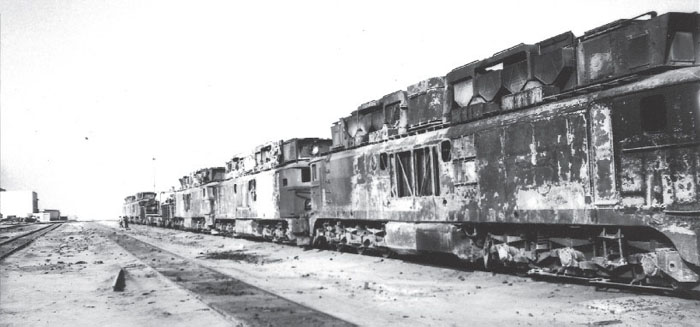
The damage caused by a POLISARIO raid on the locomotive depot.
(Photo: Private Collection)
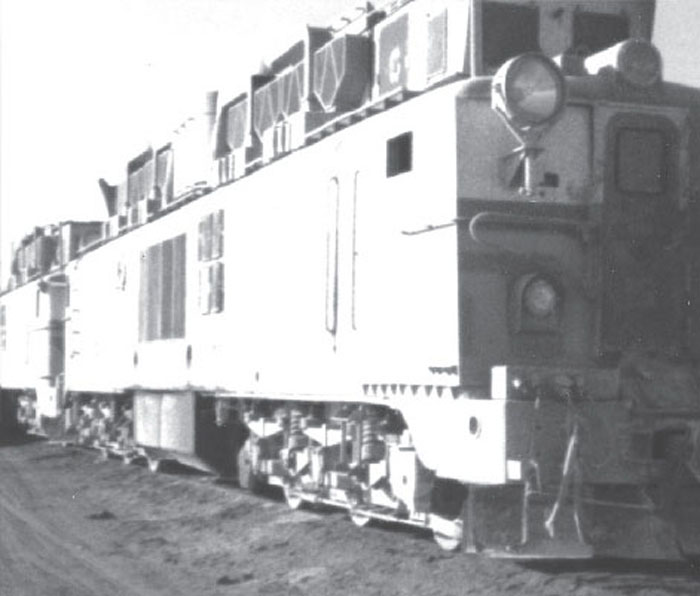
The weight of the loaded iron ore trains required the use of three or four coupled locomotives. Note the powerful track-illuminating searchlight mounted lower down on the header loco, and therefore less vulnerable than on the standard production models. The superstructure fitted to the loco roof contained and protected the engine’s vital air-filtration system.
(Photo: Private Collection)
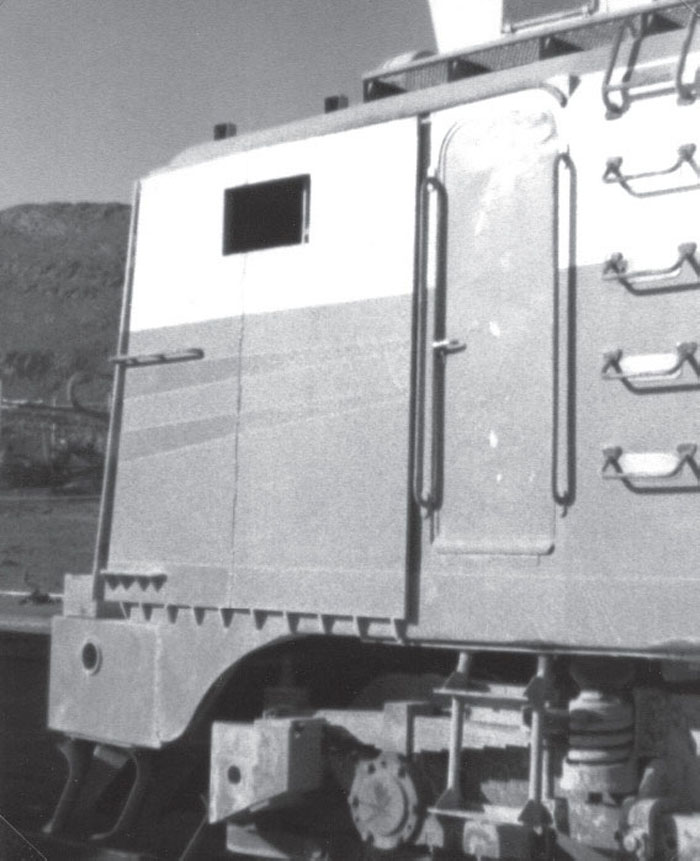
Armour plating of the driving cab, with the offset spacing of 3mm just visible, and the company’s livery continued over the armour.
(Photo: Private Collection)
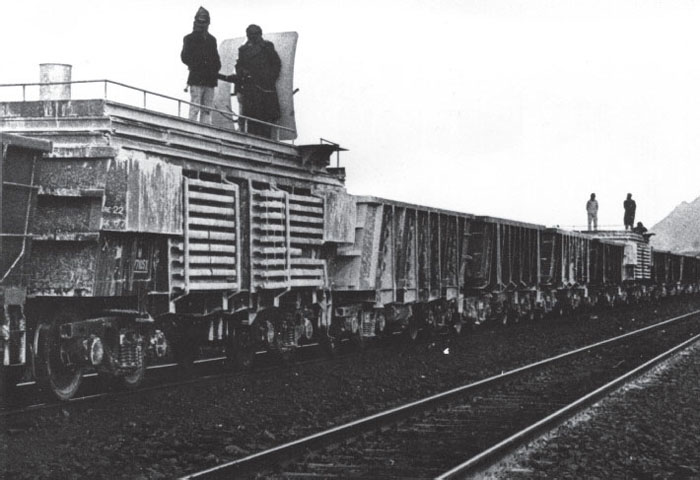
Each train was made up of at least 200 wagons, among which armoured wagons were inserted at intervals. They would be withdrawn from service in 1979. The guards in their exposed positions were far more likely to flee or seek shelter than to fight back against raiders …
(Photo: Private Collection)
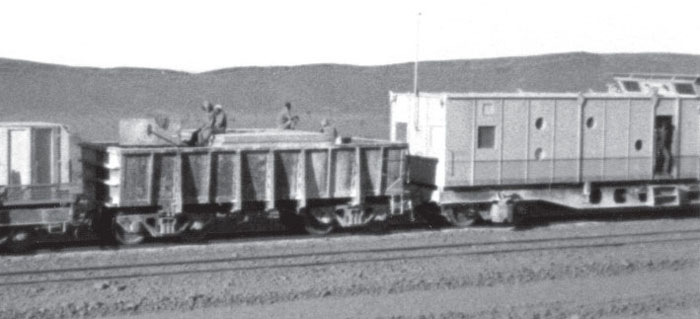
In 1979, an armoured command wagon was inserted in the convoys. The mineral wagon next to it is only lightly armoured, and is armed with a shielded 23mm cannon.
(Photo: Private Collection)